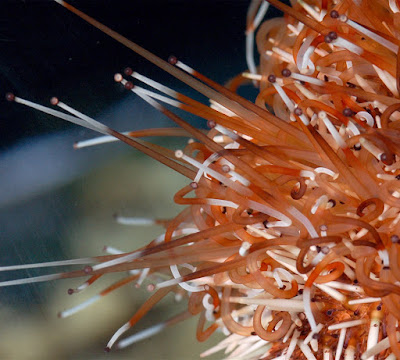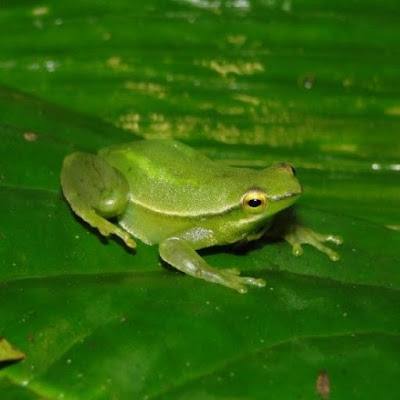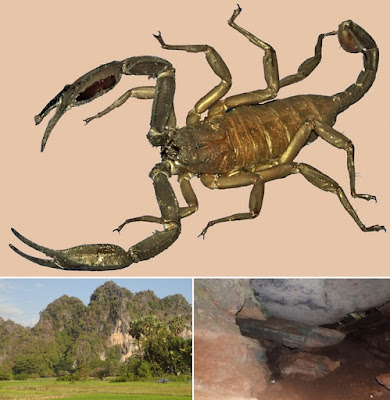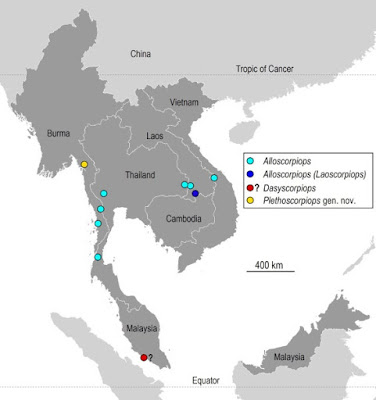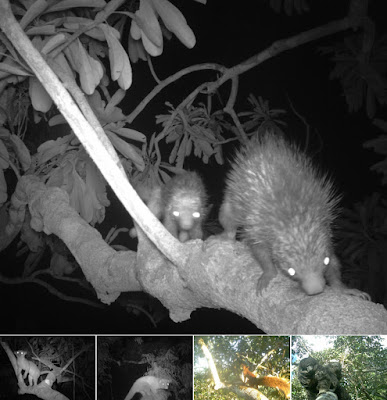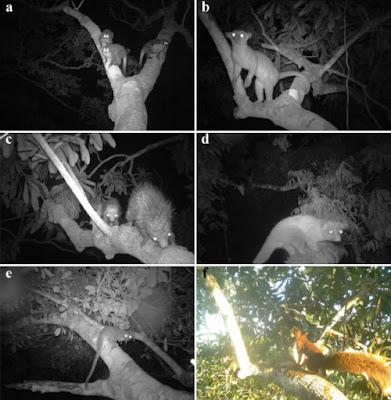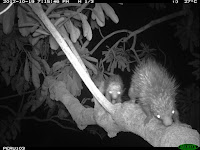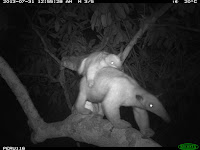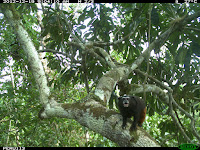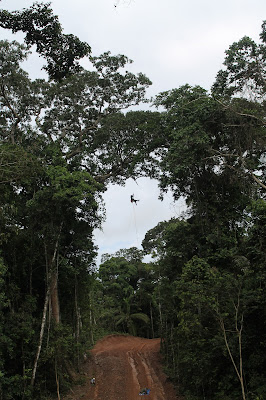[Most Recent Entries] [Calendar View]
Monday, July 24th, 2017
| Time | Event | ||||||
| 2:38a | [Invertebrate • 2017] Illustrated Guide to the Echinoid Fauna (Echinodermata: Echinoidea) of South Africa
Abstract The sea-urchins (class Echinoidea) of South Africa have received little taxonomic attention since the last comprehensive regional monographic guide, which was published in 1976 and is thus now severely outdated. That account was also poorly illustrated, making it difficult to use. Recent work by the authors has also added some 19 additional species to the known fauna, which now stands at 70 species. The aims of this study are thus to revise and update the South African echinoid fauna list, and to present a new, easy to use and fully-illustrated guide to all known regional species. The analysis is based mainly on examination of samples from the Iziko South African Museum collections, although additional records from other museum collections, the published literature, photographic images submitted to the EchinoMap Virtual Museum Database and any other reliable records are also included. A short account of each species is given, including relevant synonymy and literature, and brief notes on identification, size, and global distribution. Photographs that best represent the diagnostic features of each species and a map showing its known records within the region accompany each species account. A binary key to species is also provided. Keywords: Echinodermata, Biodiversity, taxonomy, echinoderm, sea urchin, distribution records, identification key
Zoleka Filander and Charles Griffiths. 2017. Illustrated Guide to the Echinoid (Echinodermata: Echinoidea) Fauna of South Africa. Zootaxa. 4296(1); 1-72. DOI: 10.11646/zootaxa.4296.1.1 | ||||||
| 8:58a | [Herpetology • 2017] Sphaenorhynchus cammaeus • A New Species of Sphaenorhynchus (Anura: Hylidae) from northeastern Brazil
Abstract We describe a new species of Sphaenorhynchus from highland forest habitats in the Reserva Biológica de Pedra Talhada, an Atlantic Forest remnant of northeastern Brazil [ca. 850 m elevation]. The new species is diagnosed by having a snout–vent length of 24.8–29.3 mm in males and 26.6 mm in the only available female; snout truncate in dorsal view, protruding in lateral view; vocal sac single, subgular, moderately developed, extending to the middle of the pectoral region, longitudinal folds present; dorsolateral black line from the tip of snout extending posteriorly beyond the eye to gradually disappear on the flanks; white glandular subcloacal dermal fold present; vomerine, premaxillary, and maxillary teeth present; and advertisement call with 2–3 pulsed notes (3–6 pulses each) with a duration of 0.19–0.24 s, a frequency range of 526.3–4438.8 Hz, and a dominant frequency of 2250–3000 Hz. It is the eighth species of the genus that occurs in northeastern Brazil. Keywords: Atlantic Forest, Hatchet-faced treefrogs, Reserva Biológica de Pedra Talhada, Species description, Taxonomy, Vocalization
Sphaenorhynchus cammaeus sp. nov. Sphaenorhynchus prasinus: Da Silva et al. (2013: 1519–1520), Carvalho-e-Silva et al. (2015: 347). Sphaenorhynchus aff. palustris: Araujo-Vieira et al. (2016).
Igor Joventino Roberto, Katyuscia Araujo-Vieira, Sergio Potsch de Carvalho-e-Silva and Robson Waldemar Ávila. 2017. A New Species of Sphaenorhynchus (Anura: Hylidae) from northeastern Brazil. Herpetologica. 73(2); 148–161. DOI: 10.1655/HERPETOLOGICA-D-16-00021 Nova espécie de anfíbio é descoberta no Brasil - Primeira Hora notícias em Meio Ambiente primeirahora.com.br/noticia/207145/Nova-e | ||||||
| 1:27p | [Arachnida • 2017] Plethoscorpiops profusus • A New Genus and Species of Scorpion (Scorpiones: Scorpiopidae) from Myanmar [Burma]: Implications for the Taxonomy of the Family
Abstract Plethoscorpiops profusus gen. n., sp. n., belonging to the family Scorpiopidae Kraepelin, 1905 is described on the basis of two specimens, one adult female and one male juvenile collected in the Saddan Cave, in Kayin State, Hpa-An, Burma (Myanmar). This new scorpion taxon most certainly represents an endemic element for the fauna of Burma and seems to be strictly distributed inside the cave system. The new genus is characterized by a previously unknown and totally unique plethotaxic trichobothrial pattern within the family Scorpiopidae. Keywords: Scorpion, Scorpiopidae, Burma, New genus, New species, Trichobothrial pattern Taxonomic treatment Family Scorpiopidae Kraepelin, 1905 Genus Plethoscorpiops gen. nov. Diagnosis for the new genus: The new genus presents most of the characteristics already defined for the family Scorpiopidae and several of these characters associate it with both Alloscorpiops and Dasyscorpiops. It can, however, be characterized by a very particular trichobothrial pattern of some ‘territories’ or series. Femur with three trichobothria: dorsal, internal and external. Patella with two dorsal, one internal, 23 ventral and a very high number of 41 external trichobothria (up to 42–43 in the male paratype). Most outstanding are the values found for chela-hand with 25 ventral, two dorsal (Dt, Db), two internal (ib, it), 3 Est, 6 Et, Esb and a very high number of 19 trichobothria in the Eb series. This latter number is particularly unusual, because in the other genera of the family, only three (or five) trichobothria are observed on Eb series. See the following taxonomic comments. Type species: Plethoscorpiops profusus sp. n. Etymology: The generic name is an association of plethos with scorpiops and refers to the very high numbers of trichobothria found in the chela of pedipalps. From Latin plethora, originate from ancient Greek πληθώρη (plēthōrē) = plenty. Description of the new species Plethoscorpiops profusus sp. n. Burma (Myanmar), Kayin State, Hpa-An, Saddan Cave, 250 m alt., about 90 m from the entry, hidden in wall crevices, 31/VII/2016 (A. Giupponi & A. Kury leg.). Female holotype, deposited in the Museu Nacional, Rio de Janeiro; male juvenile paratype deposited in the ‘Muséum national d’histoire naturelle’, Paris. Etymology: The specific name refers to the very high number of trichobothria presented by the new species. Diagnosis: Species of moderate size relative to other species of the family Scorpiopidae, adult female 61.8 mm in total length. Coloration dark reddish-brown; three pairs of lateral eyes, the third pair reduced; pectines with 9–9 teeth in the female holotype and 12–13 teeth in the male paratype; fulcra reduced to vestigial. Annular ring clearly marked in the telson. Trichobothrial pattern as in generic diagnosis. .... Wilson R. Lourenço. 2017. A New Genus and Species of Scorpion from Burma [Myanmar] (Scorpiones: Scorpiopidae): Implications for the Taxonomy of the Family. {Un nouveau genre et espèce de scorpion de Birmanie [Myanmar] (Scorpiones : Scorpiopidae) : implicationsdans la taxonomie de la famille}. Comptes Rendus Biologies. In Press. DOI: 10.1016/j.crvi.2017.05.003 Résumé: Plethoscorpiops profusus gen. n., sp. n., appartenant à la famille des Scorpiopidae Kraepelin, 1905 est décrit sur deux spécimens, une femelle adulte et un mâle juvénile, collectés dans la grotte Saddan, située dans l’État de Kayin, Hpa-An, Myanmar. Ce nouveau taxon scorpionique représente très certainement un élément endémique pour la faune de Myanmar et semble strictement inféodé dans le système cavernicole. Le nouveau genre est caractérisé par un modèle trichobothriotaxique, pléthotaxique, encore inconnu et certainement unique parmi les scorpions de la famille des Scorpiopidae. Mots clés: Scorpion, Scorpiopidae, Myanmar, Nouveau genre, Nouvelle espèce, Modèle trichobothriotaxique | ||||||
| 1:30p | [Mammalogy / Conservation • 2017] Natural Canopy Bridges Effectively Mitigate Tropical Forest Fragmentation for Arboreal Mammals
Abstract Linear infrastructure development and resulting habitat fragmentation are expanding in Neotropical forests, and arboreal mammals may be disproportionately impacted by these linear habitat clearings. Maintaining canopy connectivity through preservation of connecting branches (i.e. natural canopy bridges) may help mitigate that impact. Using camera traps, we evaluated crossing rates of a pipeline right-of-way in a control area with no bridges and in a test area where 13 bridges were left by the pipeline construction company. Monitoring all canopy crossing points for a year (7,102 canopy camera nights), we confirmed bridge use by 25 mammal species from 12 families. With bridge use beginning immediately after exposure and increasing over time, use rates were over two orders of magnitude higher than on the ground. We also found a positive relationship between a bridge’s use rate and the number of species that used it, suggesting well-used bridges benefit multiple species. Data suggest bridge use may be related to a combination of bridge branch connectivity, multiple connections, connectivity to adjacent forest, and foliage cover. Given the high use rate and minimal cost, we recommend all linear infrastructure projects in forests with arboreal mammal populations include canopy bridges. Coendou ichillus, Tamandua tetradactyla Pithecia irrorata, Saguinus fuscicollis
Tremaine Gregory, Farah Carrasco-Rueda, Alfonso Alonso, Joseph Kolowski and Jessica L. Deichmann. 2017. Natural Canopy Bridges Effectively Mitigate Tropical Forest Fragmentation for Arboreal Mammals. Scientific Reports. 7, Article number: 3892. DOI: 10.1038/s41598-017-04112-x Natural Canopy Bridges Maintain Vital Connections for Arboreal Mammals in Fragmented Forests NationalZoo.SI.edu/news/natural-canopy-b |
| << Previous Day |
2017/07/24 [Calendar] |
Next Day >> |
